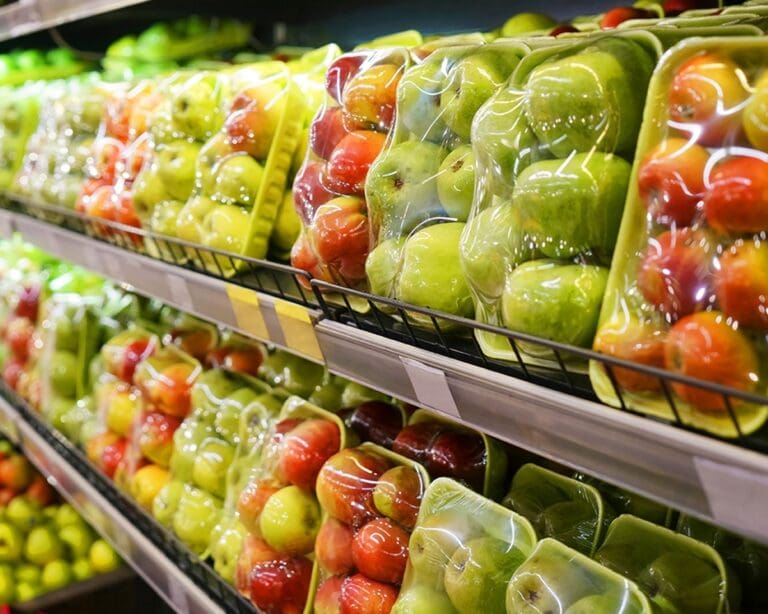Market pressures on Norwegian cod
Since December 2023, frozen cod from Norway has encountered market pressure due to several factors affecting the demand and supply of this Norwegian seafood product. European sanctions against Russian seafood have intensified interest in Norwegian cod among European buyers. During the last quarter, there has been significant demand in the Asian market for Norwegian cod, particularly in countries such as China, Vietnam, and Indonesia. These Asian nations serve as processors, exporting the cod to the US. The US ban on direct and indirect importation of Russian seafood, further influenced the demand for Norwegian cod.
The supply of cod will be limited in 2024 as the quota in the Barents Sea has been reduced by 17% year-on-year. Additionally, the Norwegian Seafood Council has reported a 19% year-on-year drop in monthly export volumes for May. Regarding the quota situation for the 2025 season, the Norwegian-Russian research group recommends reducing the total allowable catch (TAC) for cod in the Barents Sea by 31%. This indicates that the catches for 2025 should be lower than 31,587 MT.
Due to the Russia-Ukraine war, Russia has been temporarily suspended from the International Council for the Exploration of the Sea (ICES). Normally, ICES integrates scientists from Russia and Norway in the cod quota assessment for the Barents Sea. However, this year, the quota assessment was conducted exclusively by scientists from VNIRO (Russia) and IMR (Norway). Consequently, this advice is not considered an ICES recommendation. Nevertheless, the cooperative efforts between scientific institutions demonstrate a mutual interest in managing the cod fishery between the two countries.
Sockeye prices fall earlier than expected amid rising landings and weaker demand
Sockeye prices continued to decline last week as landings increased in several regions, including Prince William Sound, Alaska Peninsula, Bristol Bay, and Barclay Sound in Canada. With more product landing, supplies are becoming more available, leading to downward pricing pressure. Some industry observers note that prices have dipped earlier than usual. Typically, prices drop when Bristol Bay’s harvest peaks, but despite fishing having commenced, substantial landings have not yet begun. There are some indications of weakening sales volume demand; for instance, market participants report fewer large orders compared to other years. This may be contributing to the earlier price decline observed this year.
A factor influencing the possibility of sustained lower prices could be processors’ preference to not freeze inventory. Typically, processors freeze when prices are unfavorable, and supply is sufficient. However, due to constraints imposed by banks following two difficult years, many are unable to maintain large frozen inventories. Instead, they opt for quicker sales at lower prices to generate immediate cash flow through fresh sales.
Despite these declines, a lower overall forecast for sockeye salmon, which is accurate so far, and the subsequent tighter supply have led to higher opening and current prices compared to the last two years, including the record-breaking 2022 season in Bristol Bay.
Muscle cuts from the round supported by record lean beef trimmings prices
There has been notable discussion around the record lean beef trimmings this year. Fresh 90s are sitting at a weighted average price of $3.66 per pound, 44% higher than the start of the year, and 29% above the 3-year average. The largest contributing factors include the decline of non-fed cattle (cows and bulls), the anticipation of further decline when the fed cattle market starts to rebuild, and overall tightness in beef supplies.
As prices move higher, hamburger producers can try to mitigate some of the rising input costs by sourcing imported lean trimmings or utilizing more muscle cuts to go into the grind. The industry is seeing both, but to illustrate the latter, the Expana Beef Cutout – Round is a good barometer as items from this primal like the peeled knuckle, gooseneck round, and eye of round among others have a similar lean content.
Prices have been supported all year during the run-up, and currently sit at seasonal highs. The Choice Round Cutout is 30% higher than the start of the year at $2.54 per pound.
Live l- The Canadian Spring season Is winding down as summer heats up
Summer has arrived: schools are out, vacations are starting, and the Fourth of July has passed! This season brings a surge in resort demand for lobster products. However, it also aligns with the gradual closures of spring Canadian fishing areas, while the Maine fishing season is just beginning, limiting supply. Typically, Maine catch levels reach their peak between late July and August.
The Canadian Spring season produced substantial catch levels that at times overwhelmed the market. Processors, tubers, and the live market secured products without shortages and at reduced shore and boat prices. The shore price in Canada reached a record $20.00 CAD before the season began, but as each LFA started and raw material became readily available, the price steadily declined. Currently, the shore price ranges from $6.75 to $7.00 CAD, depending on the area, marking a 62.5% drop since the spring start. The continuous influx of products throughout the season, combined with fair demand, led to market prices hitting their yearly lows in mid-June. Both New England and Mid-Atlantic prices for all sizes are trading in line with or slightly below their 9-year averages for this time. New England halves are trading 20.69% lower than this time last year.
Approaching the end of June, most of the larger Canadian fishing areas will be closing. With the Maine fishing season just beginning, supply will be light until Maine catches pick up. The combination of reduced product availability and increased demand ahead of the holiday results in heightened competition on the shore. Within the last week and a half, the Maine boat price has increased by 70 cents, while market prices have firmed from their yearly lows. Market participants will be closely watching demand as the combination of tightening supply and rising prices continues to unfold.
May pork cold storage insight: navigating the pre and post -proposition 12 landscape
The latest May USDA Pork Cold Storage Report revealed a significant decrease in total frozen pork, with a 9.37% reduction compared to the same time last year. This decline continues the trend of 2024 levels being below 2023 inventories, observed since the beginning of the year, driven by strong demand for Proposition 12-compliant pork from July 2023 until the start of 2024. Additionally, there was a month-over-month decrease of 3.48%.
Last year, a similar downtrend was noted as demand for pork increased during the spring and summer months. To meet these demand needs, some industry participants relied on frozen stocks, as the prices of fresh pork products increased for most cuts.
Throughout 2023, the total volume of pork in cold storage generally declined starting in May. This was because hogs slaughtered before July 1, 2023—the date Proposition 12 was implemented—were considered compliant. This compliance contributed to higher prices in the spot market for commodity pork during peak demand seasons. Factors such as summer heat and plant holiday downtime further constrained production, keeping supplies seasonally tight.
However, this year has not seen a significant increase in demand for Proposition 12-compliant material compared to last year, partially due to the increase in pork prices at the retail level in California. Frozen pork could only be sold in California until the end of 2023, limiting its market expansion but starting frozen stock low for the beginning of 2024.
A tight supply of pigs and weak pork demand was reported in the German pork market
Prices for both German pork carcasses and pork cuts have remained unchanged on the week, as the market sentiment remained neutral. Even though the supply of live pigs and the availability of carcasses remains limited, according to multiple market sources, demand for pork meat has remained weak during the week. Several market sources indicated lackluster market activity in the German pork market throughout the week. While mild weather conditions support a slight increase in demand for grilling items, according to market sources, this was offset by the start of the summer holiday period – with more consumers traveling, consumer demand decreased slightly.



